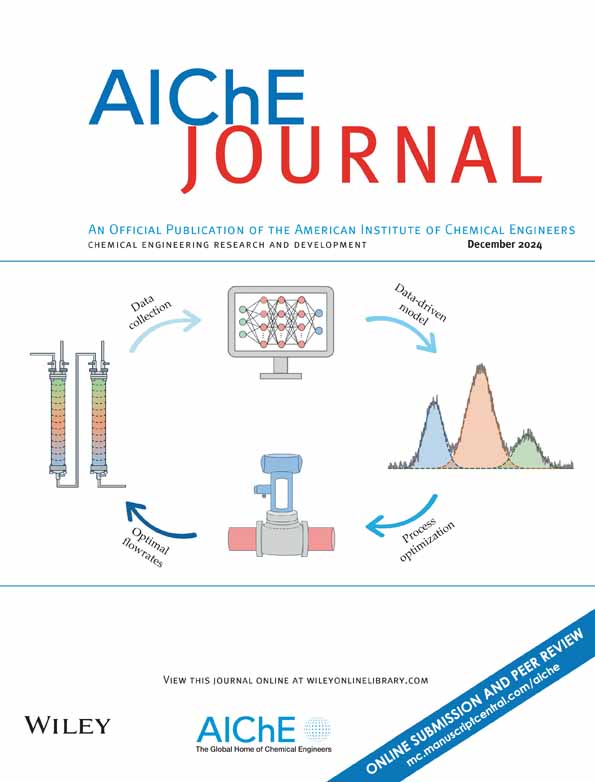Temperature optimal control and entropy–enthalpy compensation phenomenon in the CO2 capture with DEA/PEG200 as absorbent
IF 3.5
3区 工程技术
Q2 ENGINEERING, CHEMICAL
引用次数: 0
Abstract
The traditional chemical absorption method using alkanolamine aqueous solution for carbon dioxide (CO2) capture suffers from high volatility and high energy consumption for regeneration. In the present work, a mixed absorbent comprising diethanolamine (DEA) and polyethylene glycol 200 (PEG200) with high thermal stability and low specific heat capacity was designed for CO2 absorption. Absorption capacity was measured at different temperatures and pressures; the first-order kinetic and bimolecular reaction thermodynamic models were also developed, and relative parameters were obtained. An optimal simulation of the absorption process was carried out. Based on the optimal control (OC) theory and kinetic parameters, the optimal absorption temperature of the absorption process at a certain fixed time was obtained, which decreases with the increase of time. Moreover, the optimal absorption temperature curve can further enhance the absorption capacity. Furthermore, an entropy–enthalpy compensation phenomenon was found for the capture of CO2 with different absorbents.DEA/PEG200吸附剂捕集CO2的温度最优控制及熵焓补偿现象
传统的利用烷醇胺水溶液进行二氧化碳捕集的化学吸收方法存在挥发性大、再生能耗高的问题。本文设计了一种由二乙醇胺(DEA)和聚乙二醇200 (PEG200)组成的高热稳定性、低比热容的混合吸附剂。测定了不同温度和压力下的吸附量;建立了一级动力学模型和双分子反应热力学模型,并得到了相关参数。对吸收过程进行了优化模拟。基于最优控制理论和动力学参数,得到了吸附过程在某一固定时间的最优吸收温度,该温度随时间的增加而降低。此外,最佳的吸收温度曲线可以进一步提高吸收能力。此外,还发现不同吸收剂对CO2的捕获存在熵焓补偿现象。
本文章由计算机程序翻译,如有差异,请以英文原文为准。
求助全文
约1分钟内获得全文
求助全文
来源期刊

AIChE Journal
工程技术-工程:化工
CiteScore
7.10
自引率
10.80%
发文量
411
审稿时长
3.6 months
期刊介绍:
The AIChE Journal is the premier research monthly in chemical engineering and related fields. This peer-reviewed and broad-based journal reports on the most important and latest technological advances in core areas of chemical engineering as well as in other relevant engineering disciplines. To keep abreast with the progressive outlook of the profession, the Journal has been expanding the scope of its editorial contents to include such fast developing areas as biotechnology, electrochemical engineering, and environmental engineering.
The AIChE Journal is indeed the global communications vehicle for the world-renowned researchers to exchange top-notch research findings with one another. Subscribing to the AIChE Journal is like having immediate access to nine topical journals in the field.
Articles are categorized according to the following topical areas:
Biomolecular Engineering, Bioengineering, Biochemicals, Biofuels, and Food
Inorganic Materials: Synthesis and Processing
Particle Technology and Fluidization
Process Systems Engineering
Reaction Engineering, Kinetics and Catalysis
Separations: Materials, Devices and Processes
Soft Materials: Synthesis, Processing and Products
Thermodynamics and Molecular-Scale Phenomena
Transport Phenomena and Fluid Mechanics.
 求助内容:
求助内容: 应助结果提醒方式:
应助结果提醒方式:


